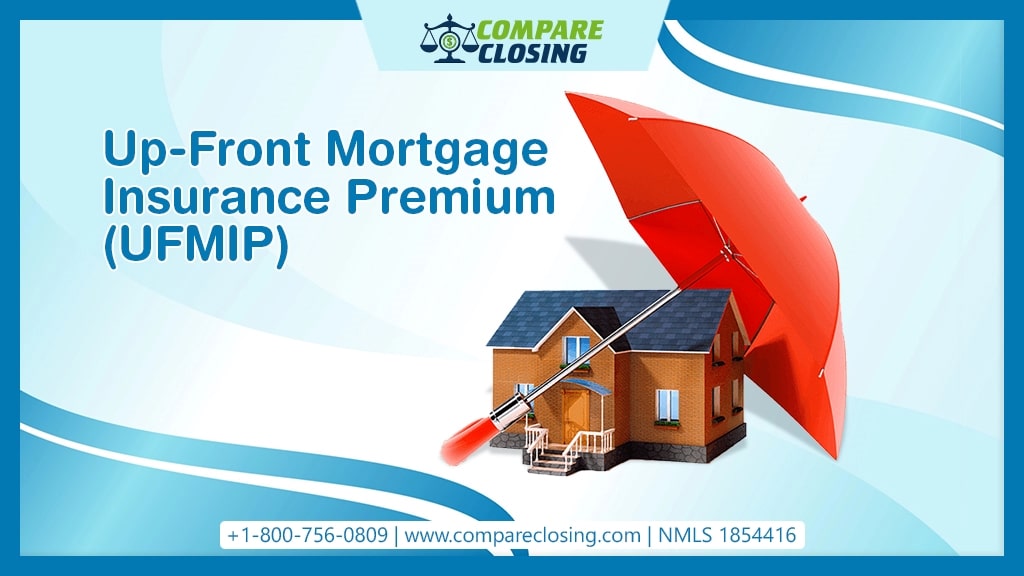Table of Contents
- What Are Netting Escrows & How Does It Work?: The Best Guide - January 2, 2024
- The Secret About Prescriptive Easement: Top Guide 1 Must Know - December 4, 2023
- About Home Equity Loans In Texas And How Can One Obtain It - November 27, 2023
About Upfront Mortgage Insurance Premium (UFMIP)
If you are planning to buy a new property with less than a 20 percent down payment, your lender will add mortgage insurance to your monthly mortgage payment.
The mortgage insurance works differently based on the type of loan you apply for. In this post, we will be talking about upfront mortgage insurance premiums (UFMIP) in detail.
What Is UFMIP?
When you apply for an FHA loan, you as a borrower need to pay a specific amount at closing called an upfront mortgage insurance premium. The actual FHA upfront mortgage insurance amount is 1.75% of the total loan amount.
The FHA UFMIP is usually added back to the loan amount instead of paying in cash. Your lender then pays the UFMIP funds to HUD which helps protect lenders and FHA in the event of default on that mortgage.
For example, you are planning to buy $350,000 with an FHA loan and a minimum down payment of 3.5 percent.
This means the down payment amount that you as a borrower need to bring at closing is $ 12,250.
At the time of closing of your home purchase, you’ll also need to pay an upfront mortgage insurance of 1.75% of the final loan amount, which is the mortgage that you are taking to buy the property.
If the home is $350,000, and you’ll put down $12,250, you’ll pay 1.75% on $337,750, which is $5,910.63.
This means your total cash to close required would be $18,160.63 plus the fees and closing costs charged by the lender.
Though mortgage insurance is also applicable in conventional loans if the borrower makes less than a 20% down payment called private mortgage insurance (PMI).
This is collected by the lender every month along with the monthly mortgage payments.
If the borrower decides to refinance the current FHA loan within the first 36 months after the closing date, the borrower will be entitled to a refund for the unused portion of the mortgage insurance premium.
According to the experts, the reimbursement is based on the first upfront mortgage insurance premium and is reduced by 2% each year until there is nothing left to reimburse.
Can The UFMIP Be Refunded?
Many people are unaware that if you pay off your mortgage insurance or refinance your FHA loan to conventional or sell your home within 5-7 years of ownership, you can usually get a refund.
This means you can still get a substantial refund after paying your FHA loan for all those years.
Homeowners can refinance and cancel their mortgage payments after 5 years if they take out an FHA loan before June 2013.
Homeowners must maintain 22% of the equity in their home and all monthly mortgage payments must be made on time.
Homeowners with FHA loans issued after June 2013 must refinance their existing loans into conventional and must have a current loan-to-value ratio of at least 80%.
What Are The Pros And Cons Of UFMIP?
Pros:
- Easier to qualify for a loan: With protections like upfront mortgage insurance premiums; the federal government can back FHA loans. This often provides better options for borrowers who may have difficulty qualifying for a traditional loan.
- Low Down Payment: Upfront mortgage insurance is 1.75% of the total loan amount. Though it is an added cost, the low down payment of 3.5% could still be an affordable loan option compared to other loan programs.
Cons:
- Higher upfront cost: When you close on your home, you must pay a one-time payment of 1.75% of the home loan amount. These costs are in addition to other closing costs and expenses for the purchase of the home. Upfront MIP increases the overall cost of buying a home, which can be difficult for borrowers with limited capital.
- Annual MIP is still required: Along with the upfront mortgage insurance premium the borrower also has to pay annual MIP along with their monthly mortgage payments.
Conclusion
FHA loans could be a great option for a borrower with limited cash in hand for buying a house, however, ensure that you are prepared for a huge UFMIP along with an annual MIP.
There are conventional loans with low down payments that you can get with no upfront MIP.
It is best to compare multiple options so that you can make an informed decision and choose the one that is most cost-effective and affordable.
Amanda Byford
Amanda Byford has bought and sold many houses in the past fifteen years and is actively managing an income property portfolio consisting of multi-family properties. During the buying and selling of these properties, she has gone through several different mortgage loan transactions. This experience and knowledge have helped her develop an avenue to guide consumers to their best available option by comparing lenders through the Compare Closing business.





